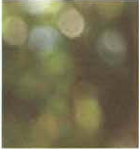Chapter 6. Convolution Filters
"Know the math behind what you are doing. A over B-What does that mean? You have to know the procedure-you have to know why."

Filters, in the form of effects and nodes, are an integral part of compositing. Many common filters, such as blur and sharpen, are based on a convolution kernel. Such kernels, which are detailed in this chapter, are equally capable of creating stylized effects, such as emboss and edge enhance. After Effects and Nuke provide a long list of convolution-style filters. Nuke offers Convolve and Matrix nodes that allow you to design your own custom convolutions. Hence, it's important to understand how kernel values affect the output. A number of sample kernels are included in this chapter. In addition, you will have the chance to update the work started with the Chapter 5 tutorial. In addition, you'll build a custom filter using existing effects and nodes.

Filter Matrices
As discussed in Chapter 5, using matrices is a necessary step when applying transformations to a layer or node output. Not only is position, rotation, skew, and scale information stored in a transformation matrix, but pixel averaging, which is required to prevent aliasing problems, is undertaken ...
Get Professional Digital Compositing: Essential Tools and Techniques now with the O’Reilly learning platform.
O’Reilly members experience books, live events, courses curated by job role, and more from O’Reilly and nearly 200 top publishers.

